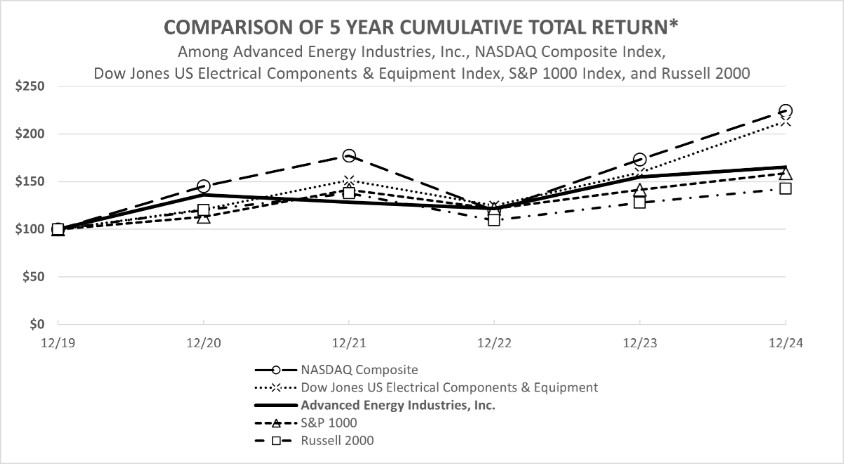ITEM 1A. RISK FACTORS
Our business, financial condition, operating results, and cash flows can be impacted by a number of factors, including, but not limited to, those set forth below, any of which could adversely impact our results and result in a decline in the value or loss of an investment in our common stock. Other factors may also exist that we cannot anticipate or that we currently do not consider to be material based on information that is currently available. These risks and uncertainties have the potential to materially affect our business, financial condition, results of operations, cash flows and future results. Such risks and uncertainties may also impact the accuracy of forward-looking statements included in this Form 10-K and other reports we file with the SEC.
Business and Industry Risks
The industries in which we compete are subject to unpredictable fluctuation or cycles, which may be volatile.
As a supplier to the global semiconductor equipment, industrial, medical, data center computing, telecommunication, and networking industries, we are subject to business fluctuations, the timing, length, and volatility of which can be difficult to predict. We are impacted by sudden changes in customers’ manufacturing capacity requirements and spending, which depend in part on technology transitions, capacity utilization, demand for customers’ products, inventory levels relative to demand, access to affordable capital, and changes in geopolitical factors, including tariffs. These changes have affected the timing and amount of customers’ purchases and investments in technology, and continue to affect our orders, net revenue, operating expenses, and net income. In addition, several of the markets in which we compete are highly cyclical and experience downturns characterized by diminished product demand, production overcapacity, high inventory levels, and price erosion, which has caused, and in the future could cause, our revenue and gross margin to decline, adversely impacting our results of operations. It is difficult to predict the timing, length, and severity of such fluctuations and downturns, and we may not be able to respond adequately or quickly to the changes in demand.
To meet rapidly changing demand in each of the industries we serve, we must effectively manage our resources and production capacity. During periods of decreasing demand for our products, we must be able to appropriately align our cost structure with prevailing market conditions, effectively manage our supply chain, and motivate and retain key employees. During periods of increasing demand, we must have enough manufacturing capacity and inventory to fulfill customer orders, effectively manage our supply chain, and attract, retain, and motivate enough qualified individuals. If we are not able to timely and appropriately adapt to changes in our business environment or to accurately assess where we are positioned within a business cycle, our business, financial condition, or results of operations may be materially and adversely affected.
For example, the semiconductor industry appears to be recovering from a cyclical downturn, and the Industrial and Medical market and Telecom and Networking market are rebalancing elevated inventory levels, which have adversely impacted demand for our products. If the semiconductor industry’s recovery does not continue as anticipated, if the length, severity, and/or volatility of the lower demand environments in the Industrial and Medical market and Telecom and Networking market exceeds our expectations, if we fail to achieve further growth in our other markets, our results of operations could be adversely impacted.
We must achieve design wins to retain our existing customers and to obtain new customers, although design wins achieved may not necessarily result in substantial revenue or gross profit.
Driven by continuing technology migration and changing customer demand, the markets we serve are constantly changing in terms of advancement in applications, core technology, and competitive pressures. New products designed for capital equipment manufacturers typically have a lifespan of many years. Increasingly, we are required to accelerate our investment in research and development to meet the time-to-market, performance, and technology adoption cycle needs of our customers simply to compete for design wins. Given such up-front investments we make to develop, evaluate, and qualify products in the design win process, our success and future growth depend on our products being designed into our customers’ new generations of equipment as they develop new technologies and applications. We must work with these manufacturers early in their design cycles to modify, enhance, and upgrade our products or

